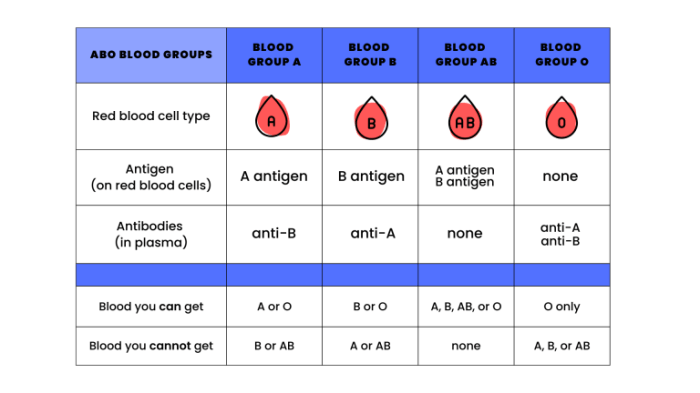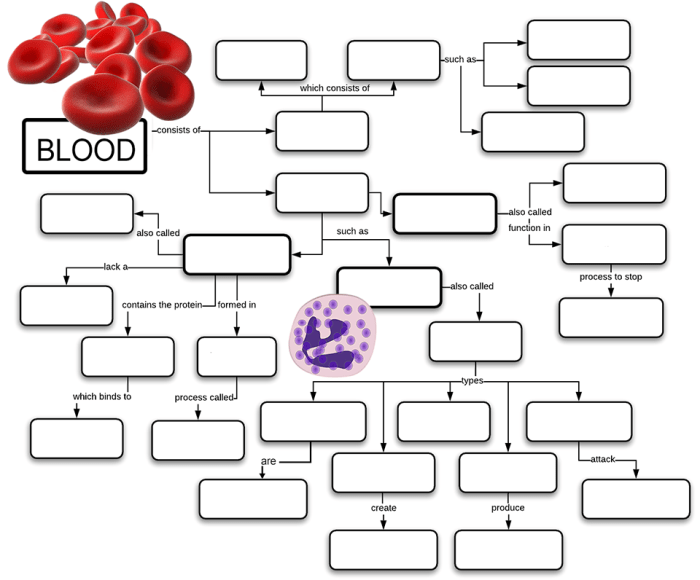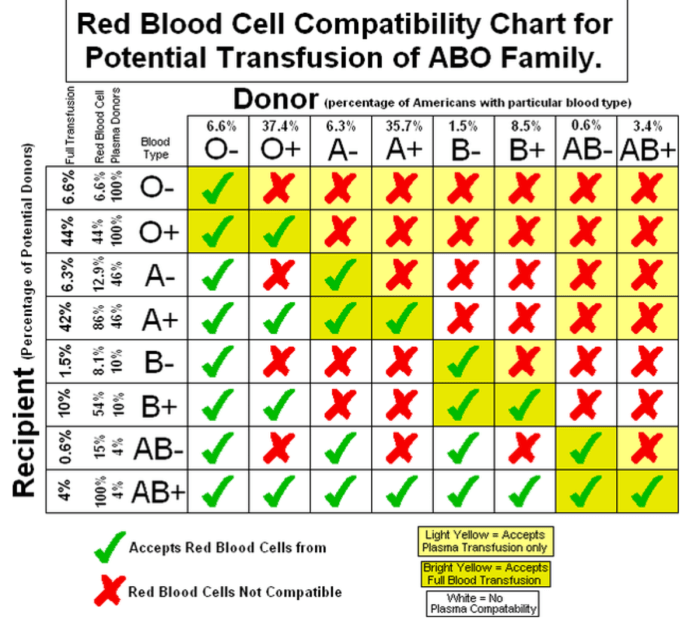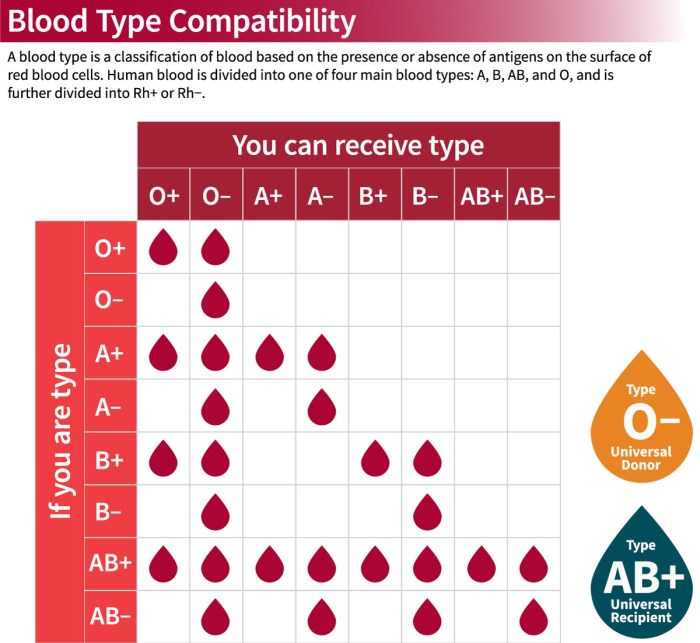Concept map blood groups and transfusions offer a comprehensive understanding of the intricate relationship between blood types and the complexities of blood transfusions. This exploration delves into the fundamentals of blood group systems, the significance of blood typing and cross-matching, and the ethical considerations that shape transfusion practices.
Blood groups, defined by the presence or absence of specific antigens on red blood cells, play a crucial role in determining transfusion compatibility. The ABO and Rh systems, among others, dictate the compatibility between donor and recipient blood, highlighting the importance of precise blood typing to prevent adverse transfusion reactions.
Blood Group Systems

Blood group systems are classifications of blood based on the presence or absence of specific antigens on the surface of red blood cells. The two main blood group systems are the ABO system and the Rh system.
ABO Blood Group System
The ABO blood group system is determined by the presence or absence of two antigens, A and B, on the surface of red blood cells. Individuals can have blood type A, B, AB, or O, depending on which antigens they possess.
Rh Blood Group System
The Rh blood group system is determined by the presence or absence of the Rh antigen on the surface of red blood cells. Individuals can be Rh-positive or Rh-negative, depending on whether or not they have the Rh antigen.
Blood Transfusions

Blood Typing and Cross-Matching
Before a blood transfusion can be performed, the recipient’s blood must be typed to determine their blood group. The donor’s blood is then cross-matched with the recipient’s blood to ensure that the two blood types are compatible.
Importance of Matching Blood Types
Matching blood types is essential to prevent transfusion reactions. A transfusion reaction occurs when the recipient’s immune system attacks the donor’s red blood cells. This can lead to serious complications, including hemolytic transfusion reactions, which can be fatal.
Concept Maps

Concept Map: Blood Groups and Transfusions
A concept map is a visual representation of the relationship between different concepts. The following concept map illustrates the relationship between blood groups and transfusions:
- Blood Groups: ABO system, Rh system
- Blood Transfusions: Blood typing, Cross-matching, Compatibility
- Compatibility: Matching blood types to prevent transfusion reactions
Case Studies
Case Study 1
A patient with blood type O- receives a transfusion of blood type A+. The patient experiences a transfusion reaction, including fever, chills, and hemolysis. The transfusion is stopped, and the patient is given supportive care.
Case Study 2, Concept map blood groups and transfusions
A patient with blood type AB+ receives a transfusion of blood type O-. The patient does not experience any transfusion reaction. This is because blood type O- is compatible with all blood types.
Ethical Considerations: Concept Map Blood Groups And Transfusions

Consent and Confidentiality
Blood transfusions require informed consent from the patient. The patient must be informed of the risks and benefits of the transfusion before they can consent to the procedure. The patient’s medical information, including their blood type, must be kept confidential.
Respecting Patient Autonomy
Patients have the right to make decisions about their own healthcare, including whether or not to receive a blood transfusion. Healthcare providers must respect the patient’s autonomy and provide them with the information they need to make an informed decision.
FAQ Section
What are the main blood group systems?
The ABO and Rh systems are the most significant blood group systems.
Why is blood typing important before a transfusion?
Blood typing determines the compatibility between donor and recipient blood, preventing potentially life-threatening transfusion reactions.
What are the ethical considerations related to blood transfusions?
Respect for patient autonomy, informed consent, and confidentiality are crucial ethical considerations in blood transfusions.